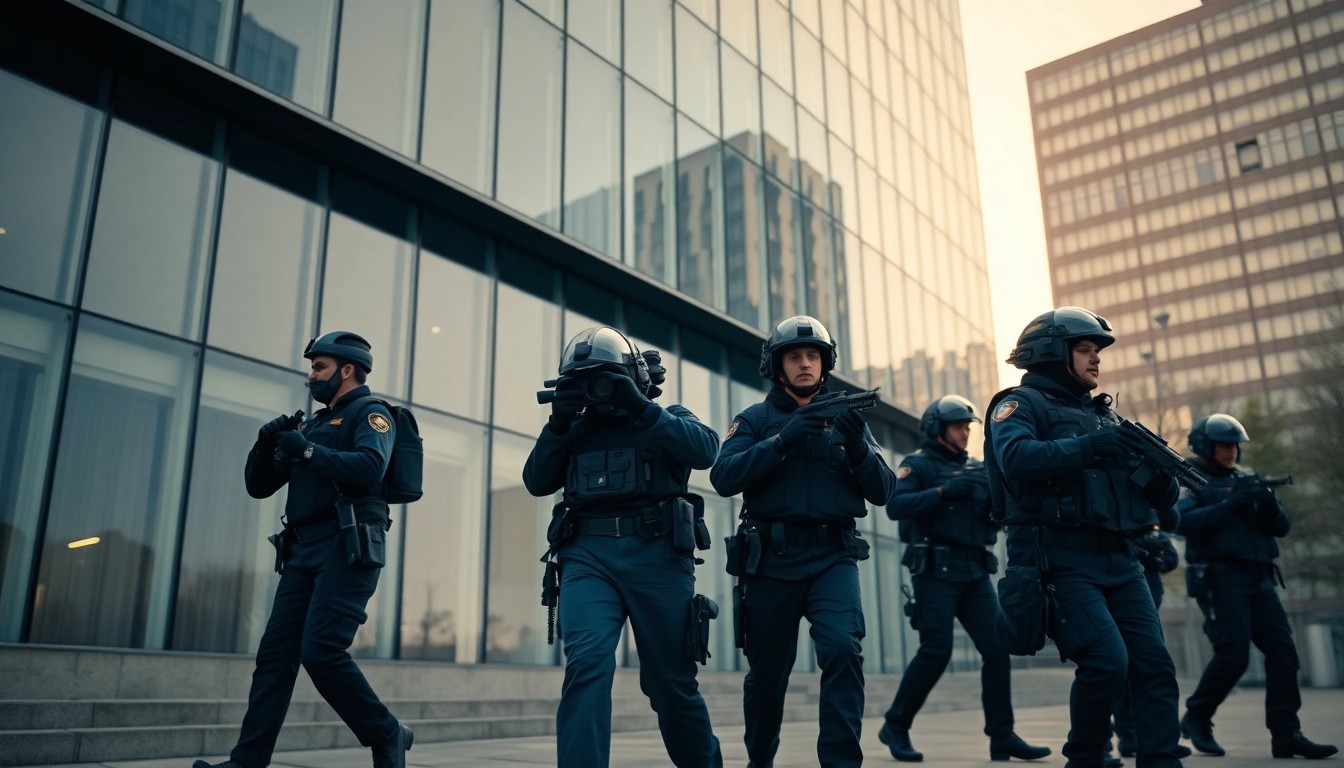
Effective Strategies for Optimal Emergency Response in Security Services
Understanding the Importance of Response in Security Services
In the realm of security services, the term Response is pivotal. It encompasses all the actions taken by security personnel during incidents such as break-ins, medical emergencies, and other crisis situations. Effective response strategies can not only minimize damage but can also save lives, making it a cornerstone of any security operation. This article delves into the nuances of response mechanisms, their formulation, challenges, and how continuous improvement can enhance overall effectiveness.
Defining Response and Its Role
At its core, response in security services refers to the systematic approach adopted when an incident occurs. This can range from initial detection and assessment to coordination, management, and resolution of the incident. The significance of a well-defined response involves:
- Immediate Action: A quick response can deter potential crimes and avert larger crises.
- Coordination: The establishment of clear protocols allows for efficient teamwork among security staff, law enforcement, and emergency services.
- Communication: Proper response entails the timely dissemination of information to stakeholders involved, ensuring everyone is on the same page.
- After Action Review: Post-incident evaluation helps in refining response strategies by identifying what worked and what didn’t.
Key Components of an Effective Response Plan
An effective response plan is structured on several key components, each vital for ensuring that organizations can handle emergencies efficiently:
- Risk Assessment: Identifying potential security threats specific to the organization or area.
- Developing Protocols: Crafting specific, actionable steps for various scenarios, such as fire, theft, or a medical emergency.
- Resource Allocation: Designating personnel, equipment, and technology needed for effective response.
- Training and Simulation: Regular drills and training sessions prepare teams for real-world situations.
- Monitoring and Review: Continuous evaluation of response operations to adapt to new threats and enhance protocols.
Case Studies on Response Effectiveness
Analyzing real-life incidents reveals the importance of effective response plans. For example, a well-prepared security team that promptly responded to a fire alarm in a retail store managed to evacuate all patrons with minimal injuries, highlighting the importance of effective protocols. Conversely, a lack of defined procedures in another case led to chaos during a medical emergency, emphasizing the dire consequences of poor planning. Each case underscores the necessity of not only developing response plans but also rigorously training the staff involved.
Challenges in Emergency Response: Preparing for the Unexpected
Despite the best-laid plans, numerous challenges can derail emergency responses. Understanding these obstacles is crucial for preparedness.
Common Obstacles in Crisis Response
Some common challenges faced during responses include:
- Limited Communication: In a crisis, communication equipment may fail, making it difficult for security personnel to coordinate effectively.
- Resource Limitations: Often, security teams face constraints due to personnel shortages or inadequate equipment.
- Unexpected Situations: Unforeseen events can arise, such as additional threats, that complicate the initial response.
- Panic and Disorientation: During emergencies, both staff and civilians may panic, reducing the effectiveness of the response.
Strategies to Mitigate Risks
To effectively manage these challenges, organizations can adopt several strategies:
- Regular Training: Implementing frequent drills to familiarize staff with procedures can greatly reduce panic and confusion.
- Backup Communication Plans: Establishing alternative communication methods ensures that coordination can continue despite primary system failures.
- Realistic Scenario Planning: Developing response plans that encompass a variety of potential emergency situations allows teams to think critically under pressure.
- Staff Wellbeing: Providing mental health support and stress relief training can reduce panic responses and improve decision-making.
Leveraging Technology for Improved Response
Advancements in technology have significantly enhanced response capabilities. From surveillance systems to mobile communication tools, technology can streamline the response process:
- Surveillance Cameras: These offer real-time monitoring and can assist in incident assessment.
- Mobile Apps: Response teams can use apps for instant communication, incident reporting, and accessing protocol guidelines.
- Data Analysis Tools: These can help predict trends in incidents, enabling proactive measures based on historical data.
- Automated Alert Systems: Direct alerts from security systems can expedite responses by notifying teams immediately of any emergencies.
Response Training: Equip Your Team for Success
Training employees is a fundamental step in ensuring effective responses. A well-trained team can markedly improve response efficiency.
Essential Training Programs for Response Teams
Various training programs should be mandated to ensure that team members are prepared:
- Emergency Response Training: Hands-on training in first aid, fire safety, and evacuation protocols.
- Crisis Management Workshops: Programs designed to teach decision-making during high-stress situations.
- Team Dynamics Exercises: Group activities that build camaraderie and improve coordination.
- Technology Familiarity Sessions: Training employees to effectively use security technology and tools during incidents.
Continuous Learning and Skill Development
The learning process must be continuous. Organizations should encourage ongoing education through:
- Refresher Courses: Regular training updates ensure that staff stay current with response protocols.
- External Workshops: Sending staff to external training programs can expose them to new techniques and information.
- Feedback Mechanisms: Using insights from past incidents to improve training methods can lead to enhanced preparedness.
Measuring Training Effectiveness
Measurement of training effectiveness is crucial to ensure its impact. Consider the following methods:
- Simulation Testing: Conduct mock emergencies to assess how well teams respond to real-world scenarios.
- Evaluation Surveys: Gathering feedback from participants can provide valuable insights into training effectiveness.
- Performance Metrics: Tracking response times and incident outcomes before and after training can illustrate improvements.
Best Practices for Streamlining Response Procedures
To ensure optimal incident management, best practices should be established that encompass all aspects of the response protocol.
Creating a Comprehensive Response Protocol
Organizations should develop an all-encompassing response protocol that is clear and easily accessible. Key elements include:
- Step-by-Step Guidelines: Clear instructions for each phase of response, including immediate actions and long-term strategies.
- Roles and Responsibilities: Defining who does what during an emergency ensures that everyone knows their tasks.
- Contact Information: Keeping an updated list of essential contacts, including local authorities, emergency services, and key personnel.
- Documentation Procedures: Guidelines for logging incidents and responses for future review.
Utilizing Data Analytics to Enhance Response Time
Data analytics can significantly improve response time by providing insights into previous incidents. Ways it can be utilized include:
- Incident Trend Analysis: Identifying common incident types and times to allocate resources more effectively.
- Response Time Metrics: Analyzing past response times to establish benchmarks and areas for improvement.
- Predictive Maintenance: Using data to predict equipment failures that could impede response effectiveness.
Collaboration with Local Authorities for Improved Response
Establishing strong relationships with local authorities is essential for an organized response. Benefits include:
- Joint Training Exercises: Coordinating drills with police and emergency services ensures seamless cooperation.
- Information Sharing: Exchanging insights and data with local agencies helps improve preparedness.
- Community Engagement: Involving the community in awareness programs can bolster overall security.
Evaluating Response Success: Metrics and Feedback
Assessing the effectiveness of response strategies is crucial for continuous improvement. This involves analyzing success metrics and gathering feedback.
Key Performance Indicators for Response Evaluation
Organizations should establish clear metrics to evaluate their response strategies, including:
- Response Time: Time taken from incident detection to the first response.
- Incident Resolution Rate: The percentage of incidents resolved successfully within a specified timeframe.
- Post-Incident Satisfaction Surveys: Gathering feedback from involved parties can reveal areas needing improvement.
- Resource Utilization Efficiency: Analyzing how effectively resources are used during responses.
Implementing Post-Incident Reviews
Post-incident reviews are vital for refining response strategies. These reviews should involve:
- Summarizing Incident Details: A complete account of what happened, the response, and the outcome.
- Identifying Lessons Learned: Discussing what went well and what could be improved.
- Updating Response Protocols: Revising response plans based on findings from the review to avoid future issues.
Adapting Strategies Based on Feedback
Adaptability is crucial for any response plan. Using collected feedback, organizations can:
- Revise Training Programs: Update training for staff based on real-world evaluations.
- Enhance Procedures: Modify response protocols to better reflect the realities of incidents encountered.
- Incorporate New Technologies: Stay abreast of advancements that could streamline the response process further.
